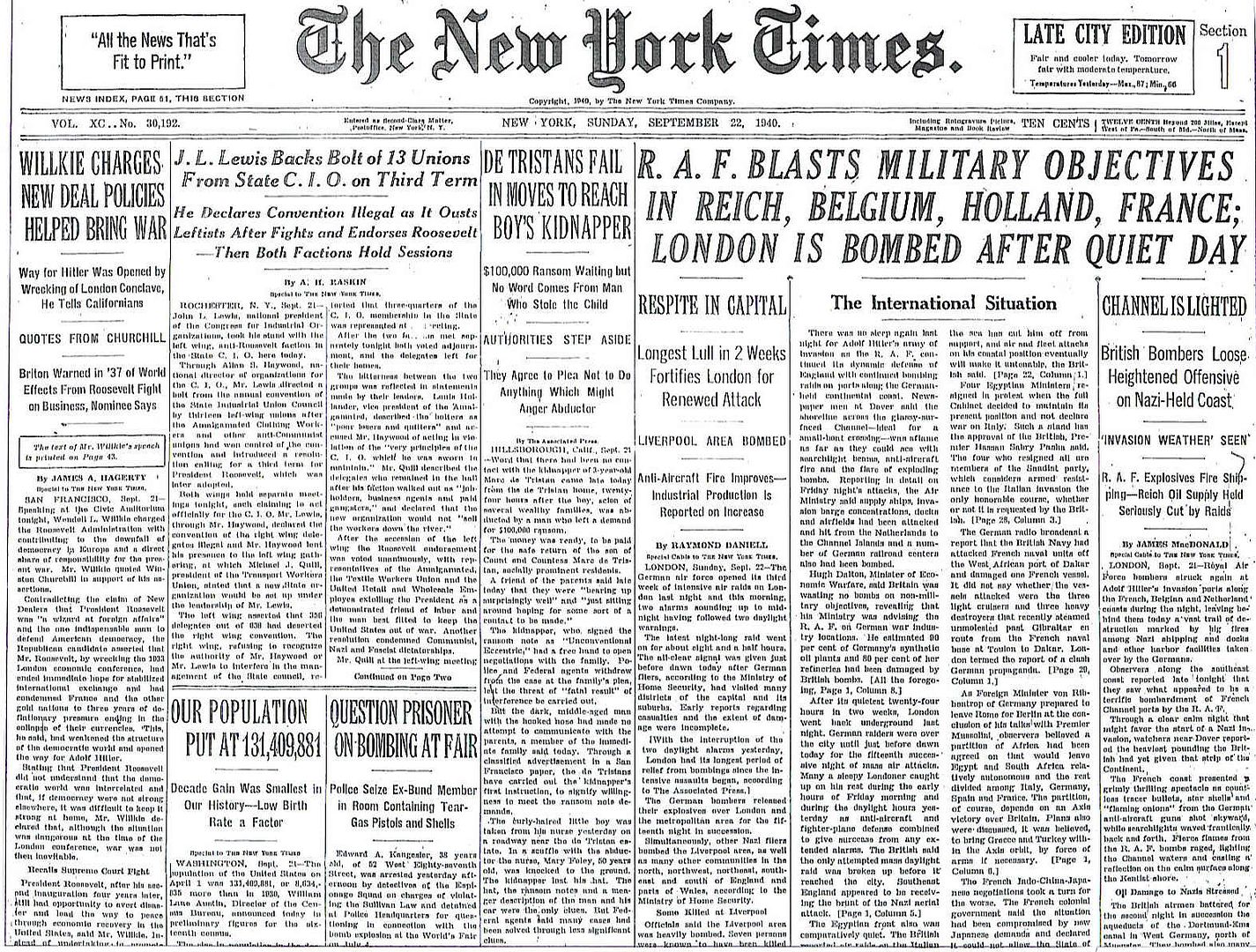
Posted on 09/22/2010 5:05:47 AM PDT by Homer_J_Simpson

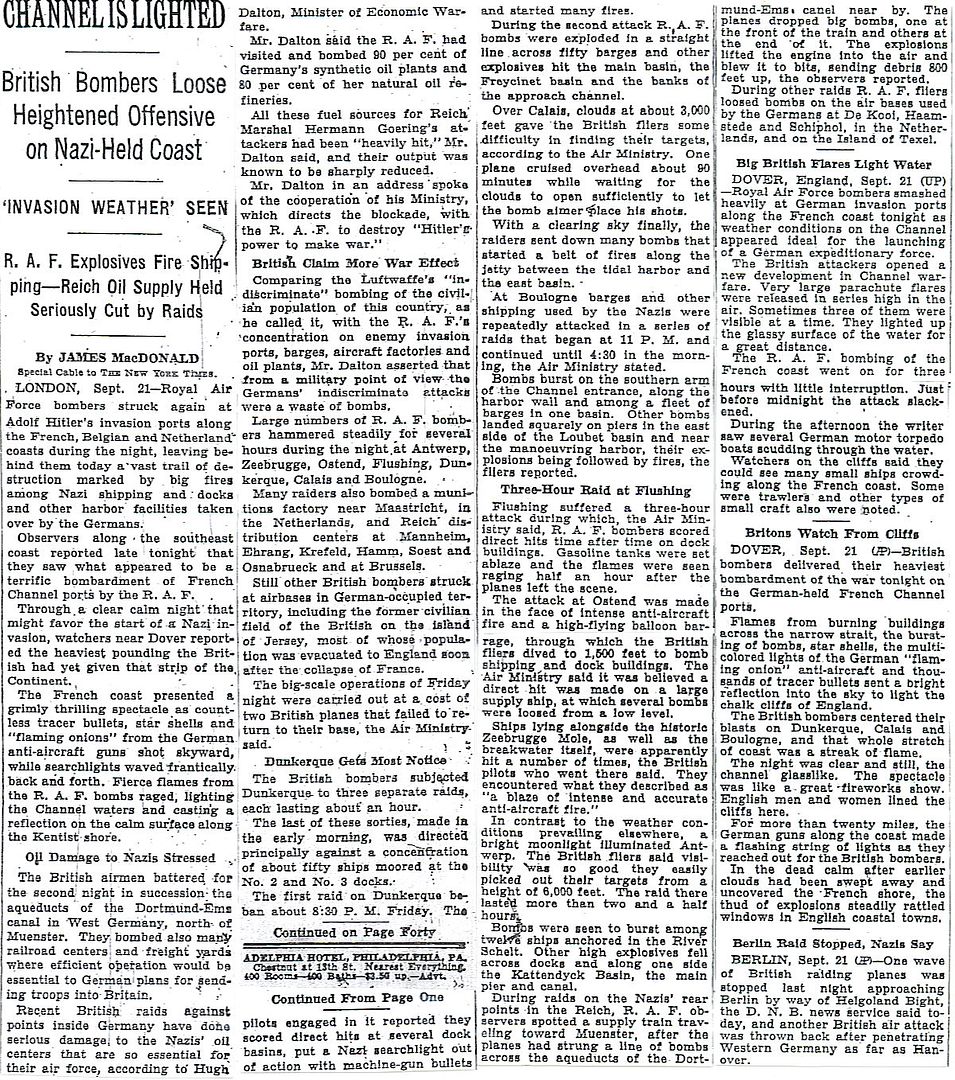
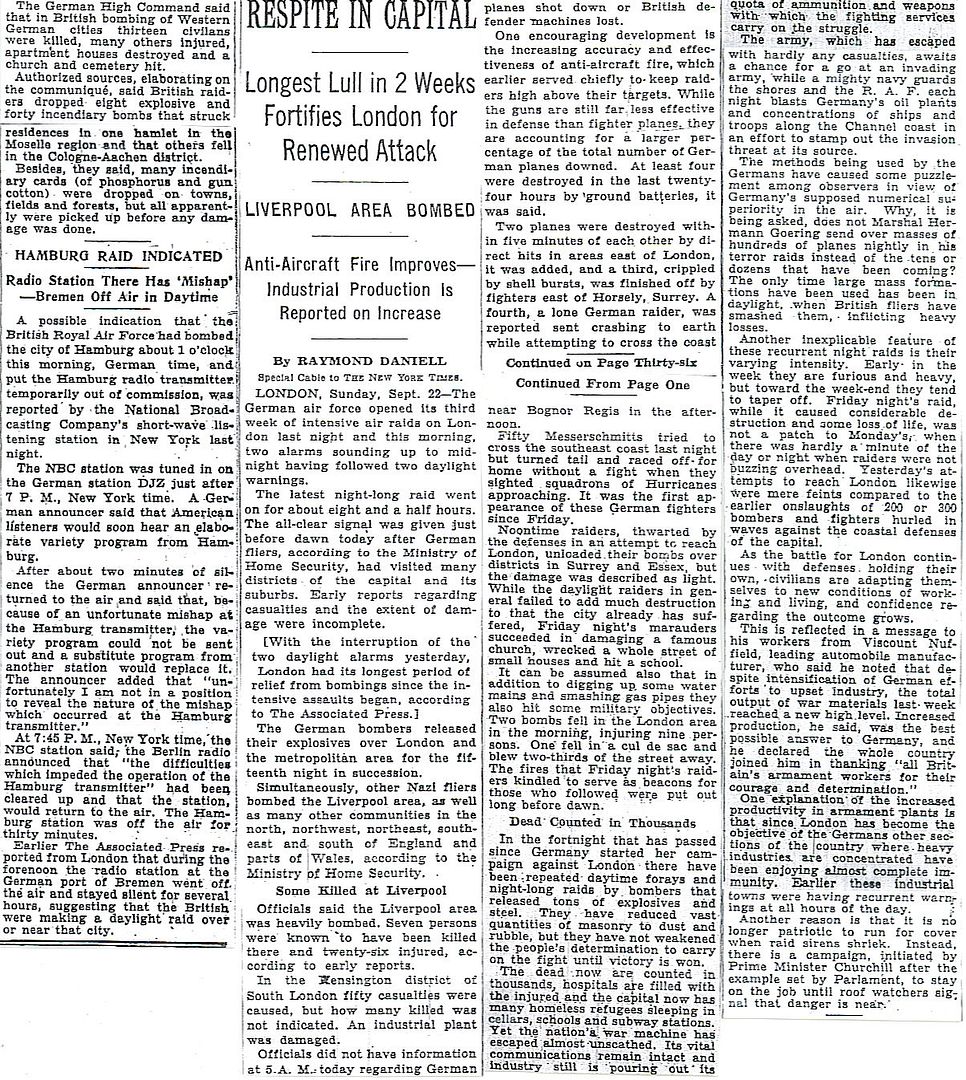
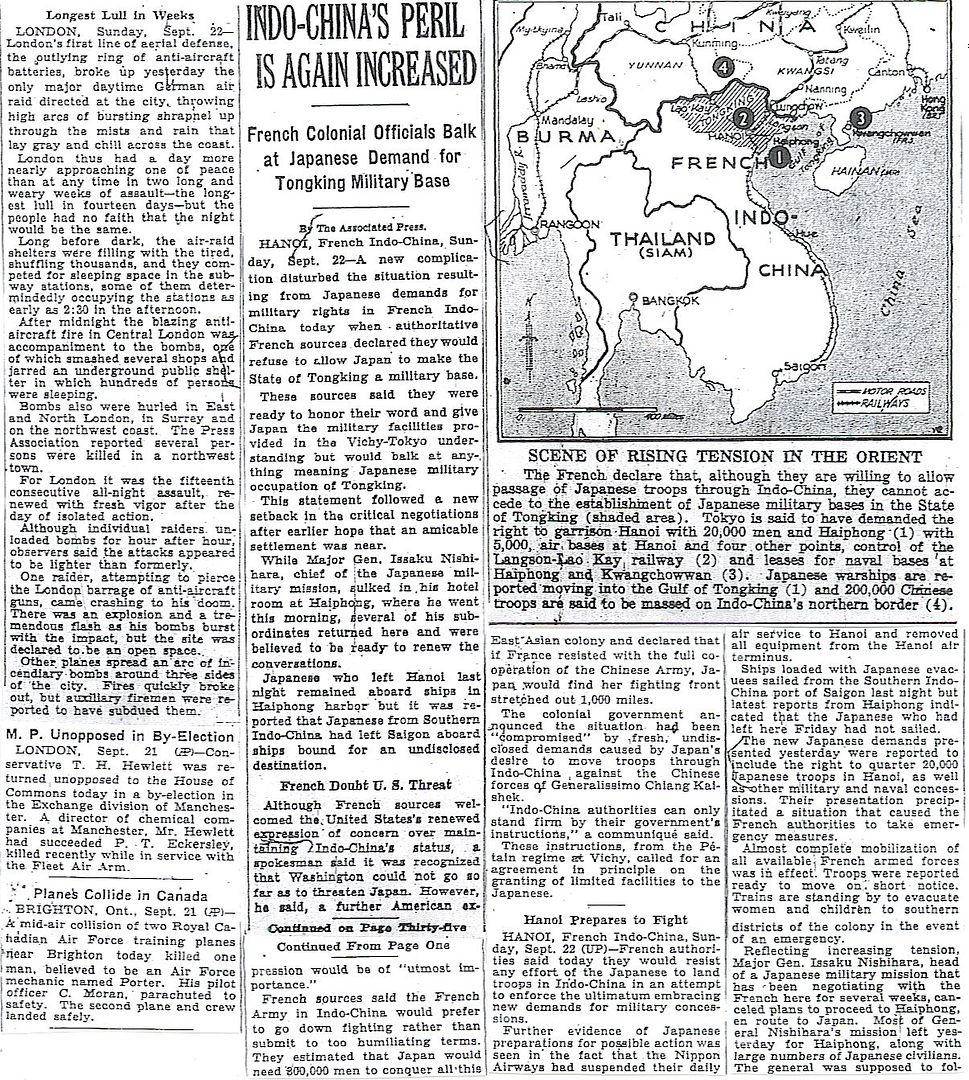
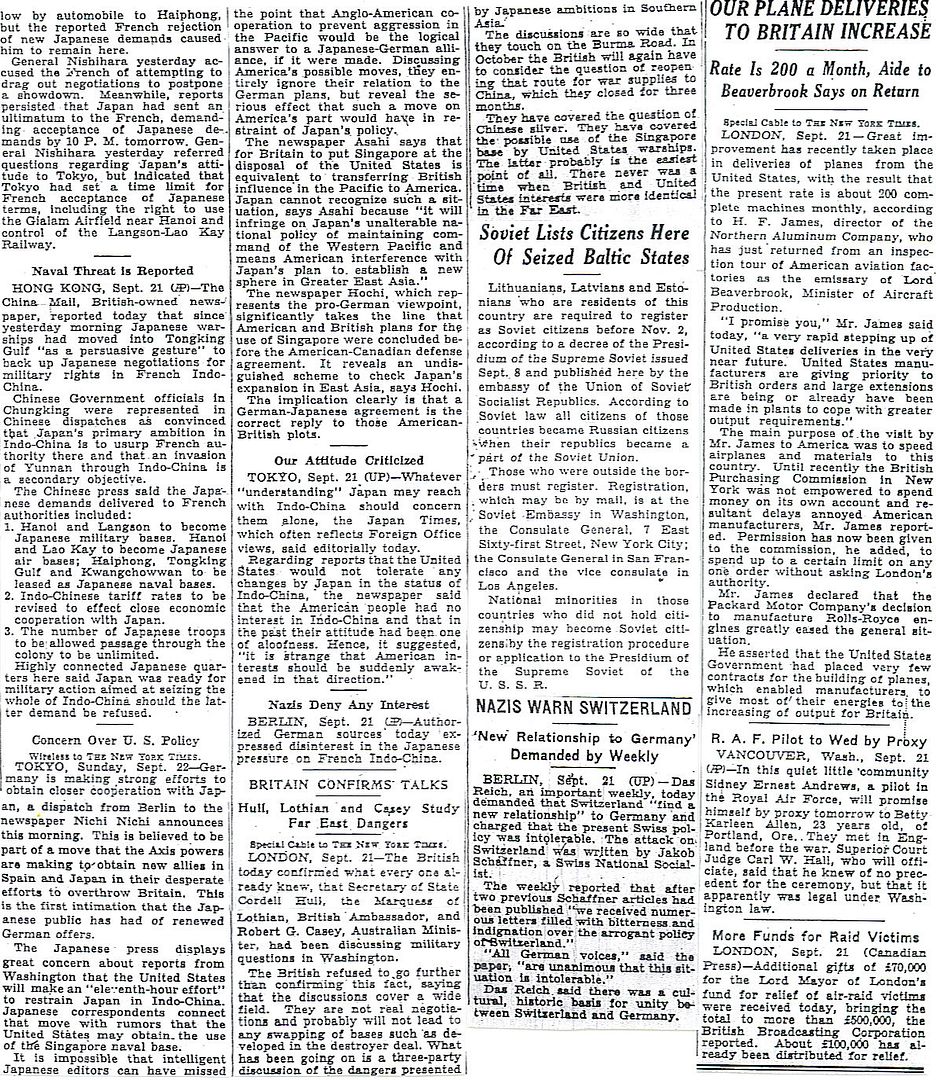

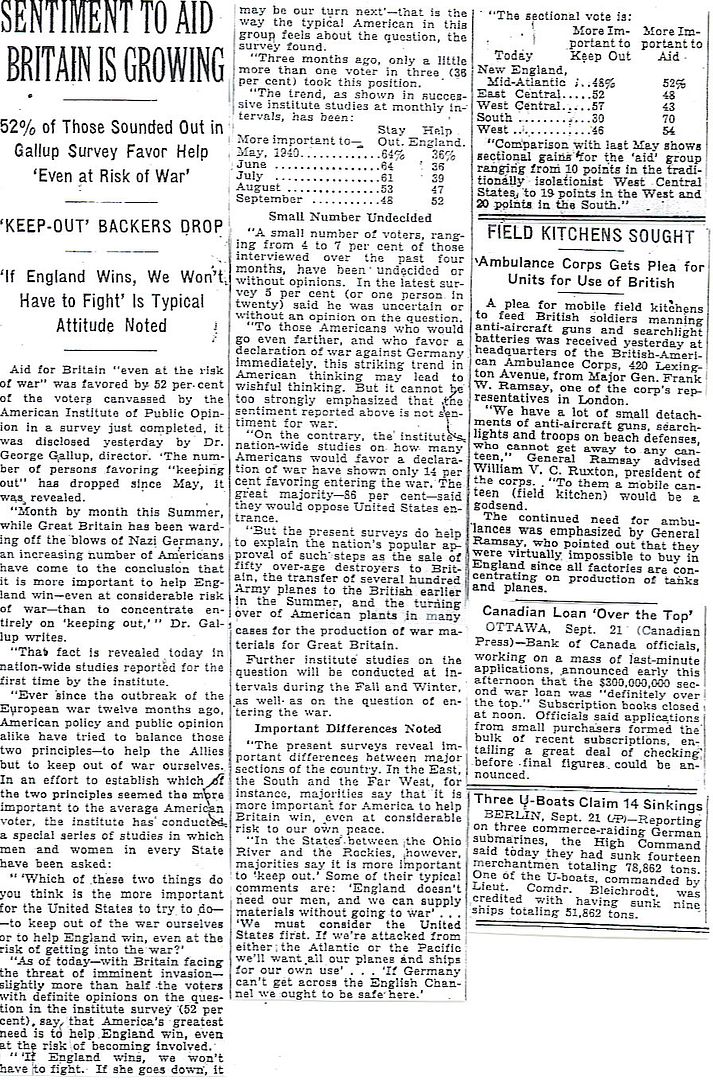
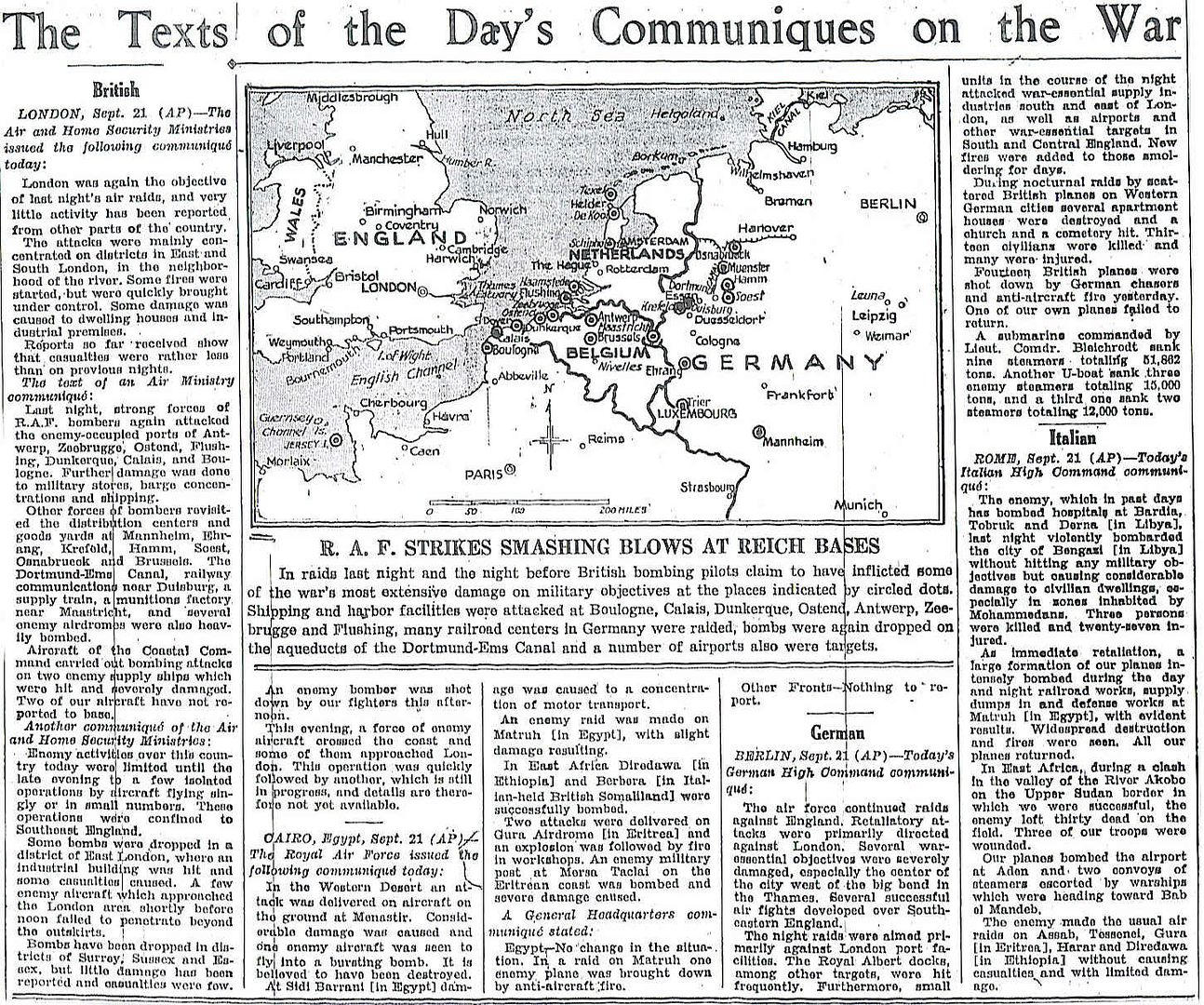
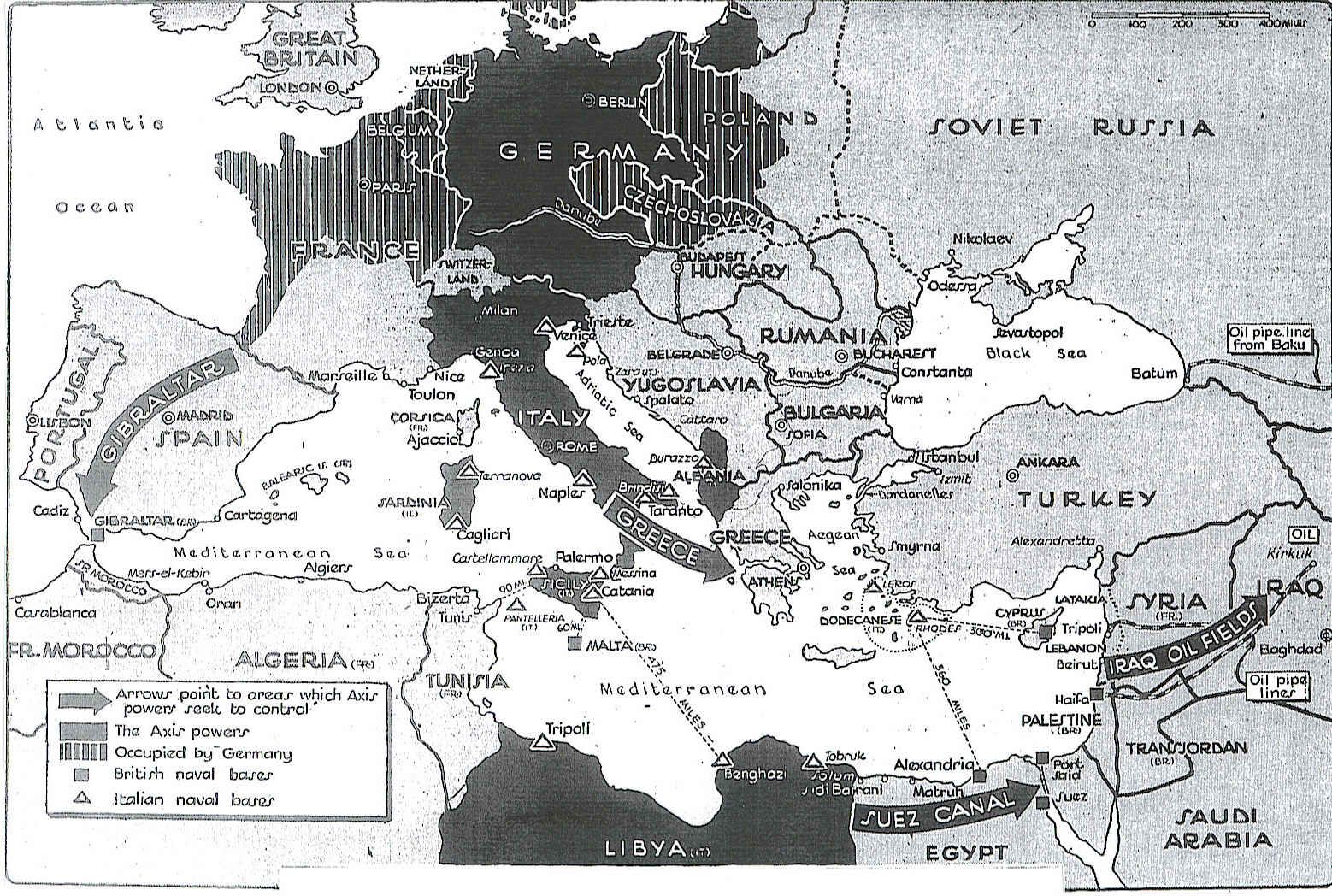
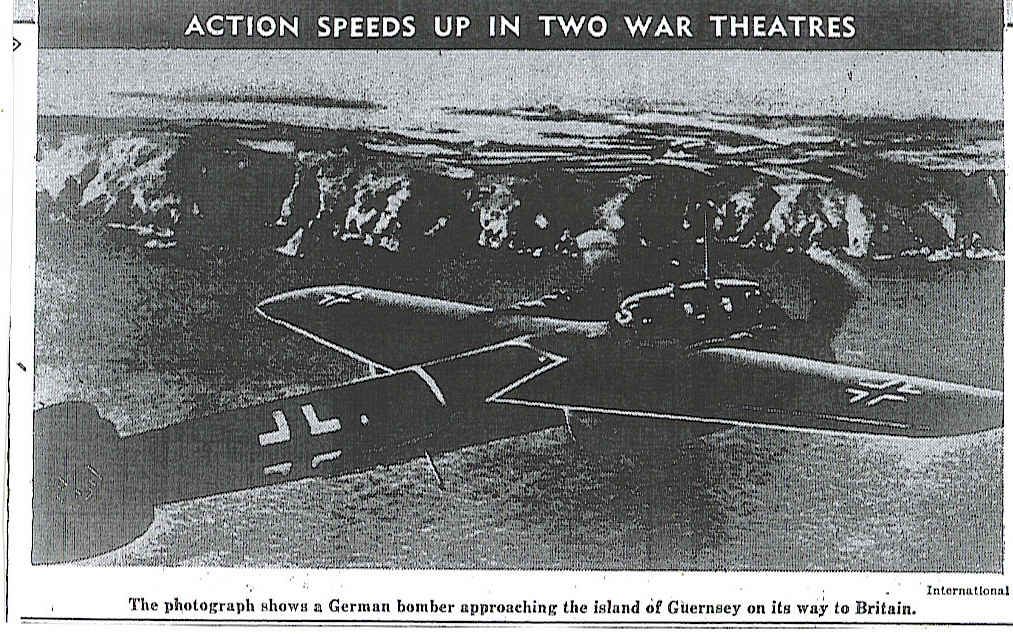
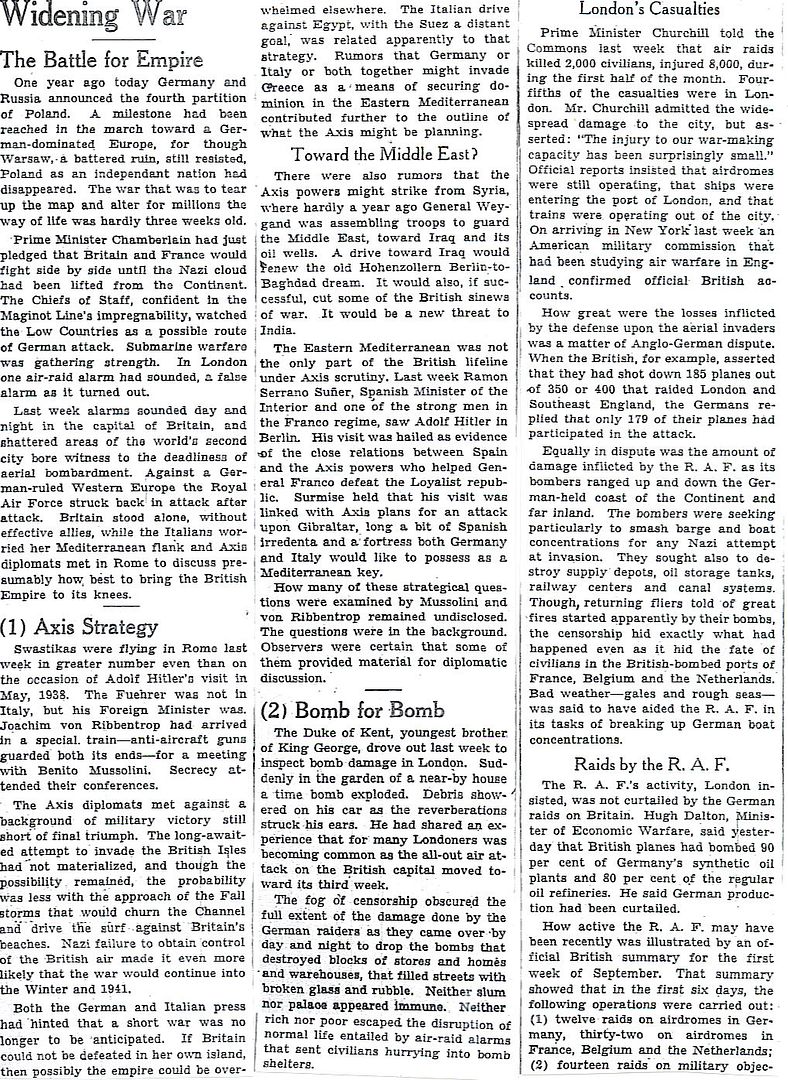

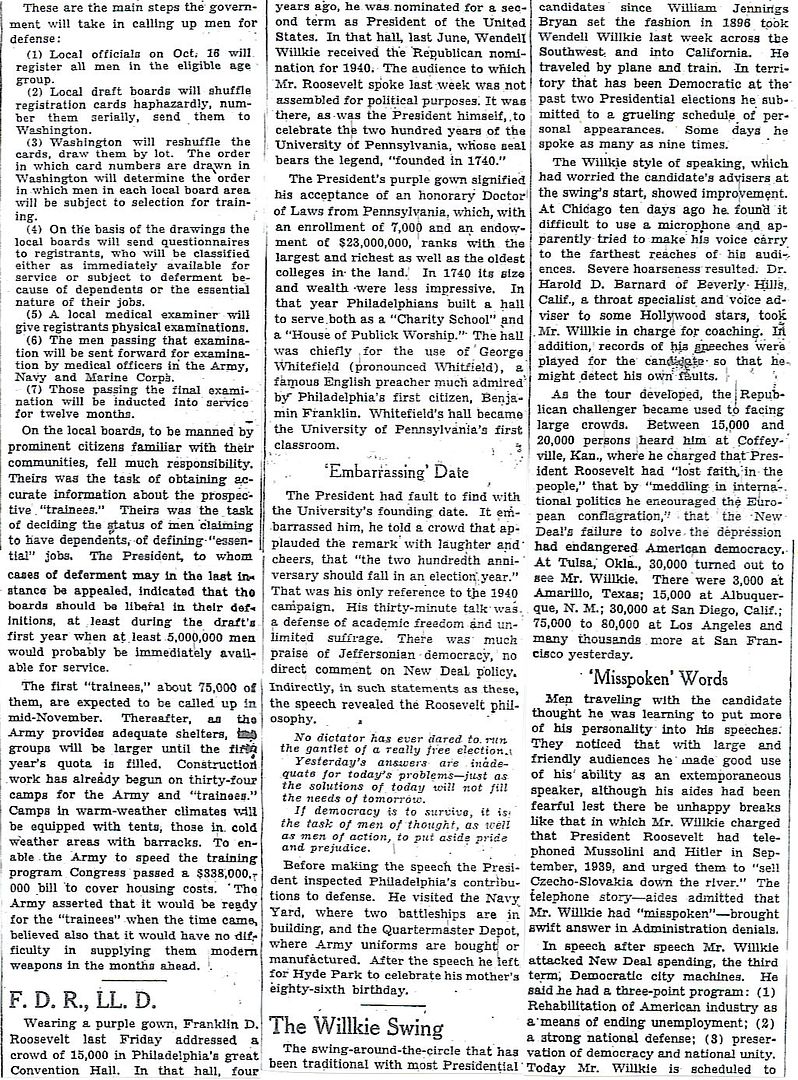
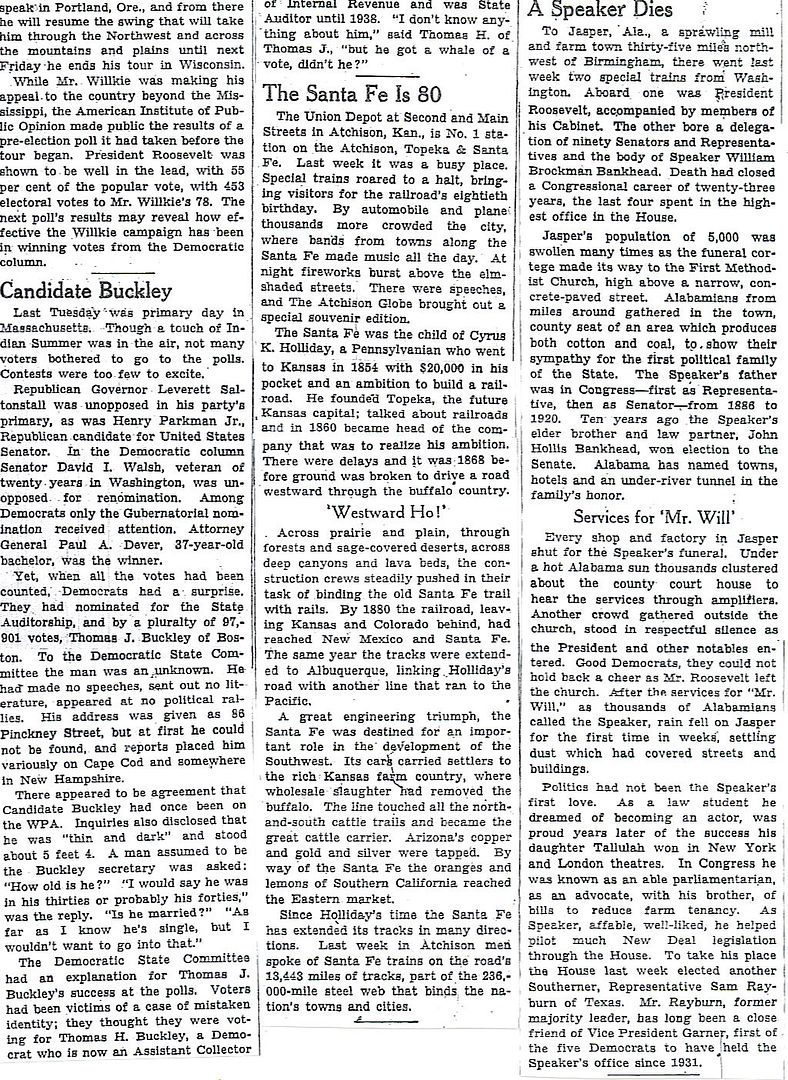
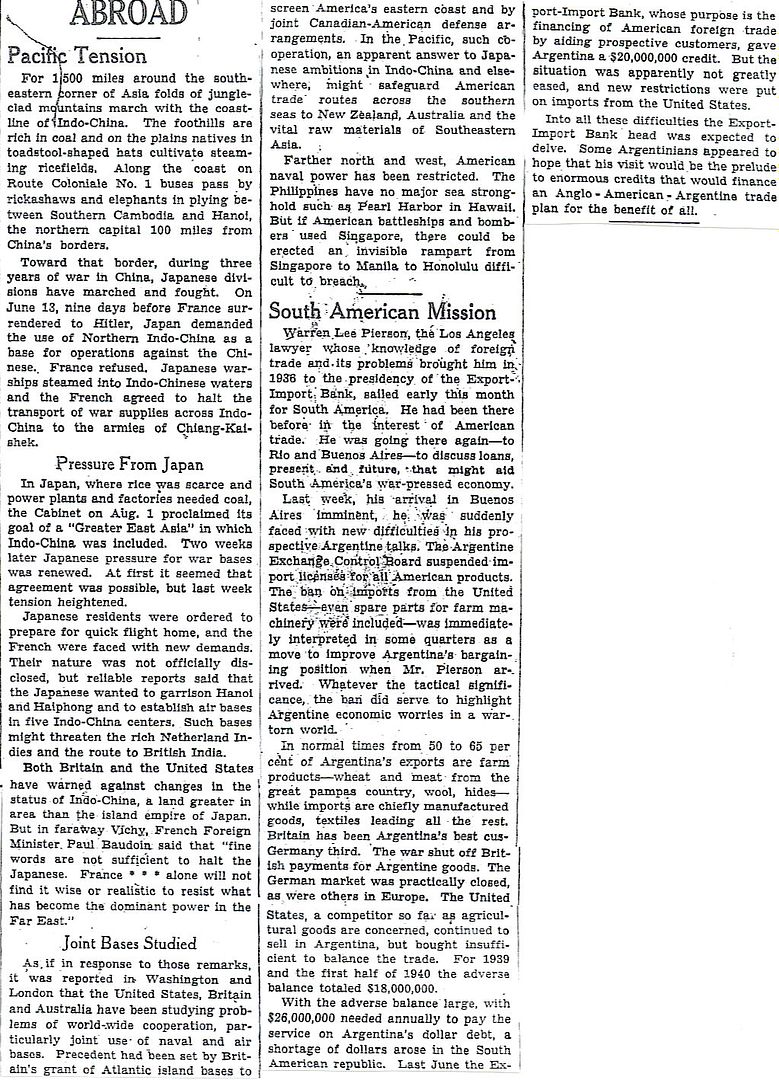
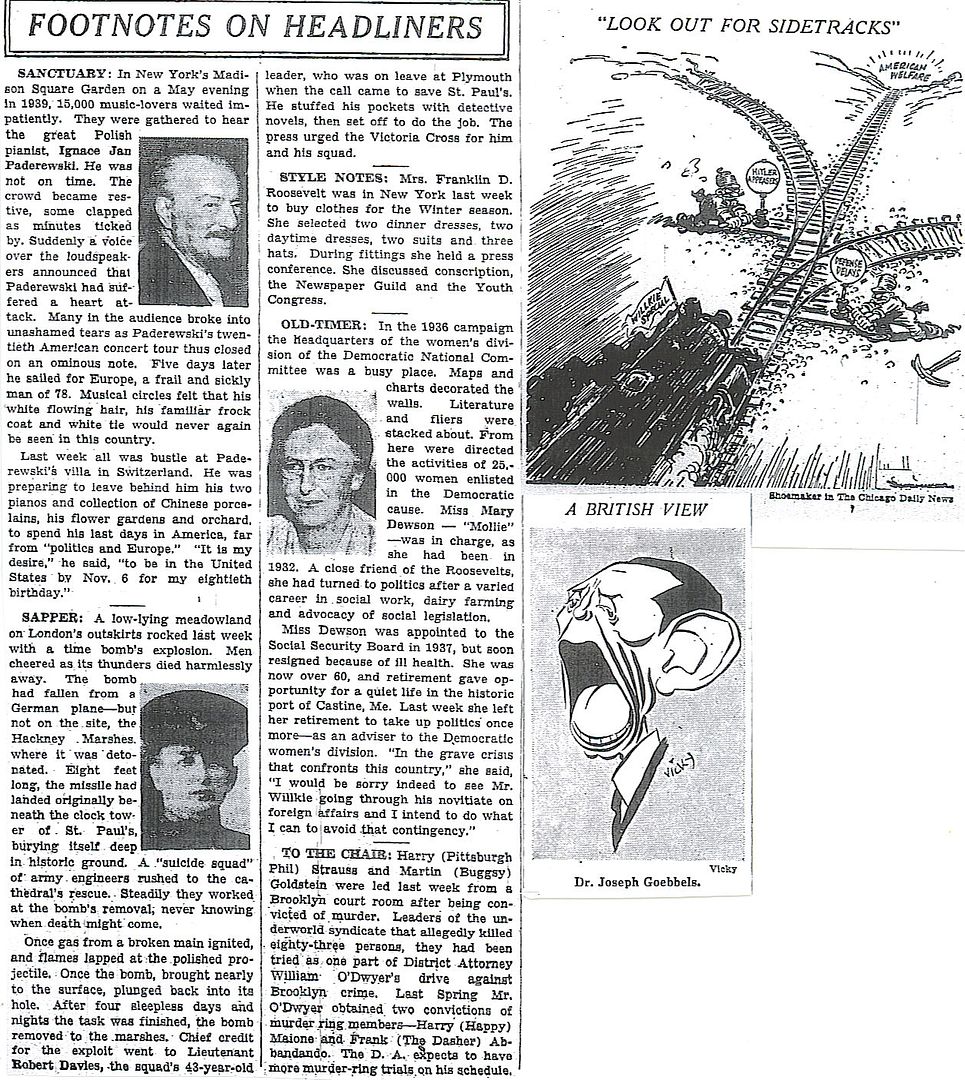
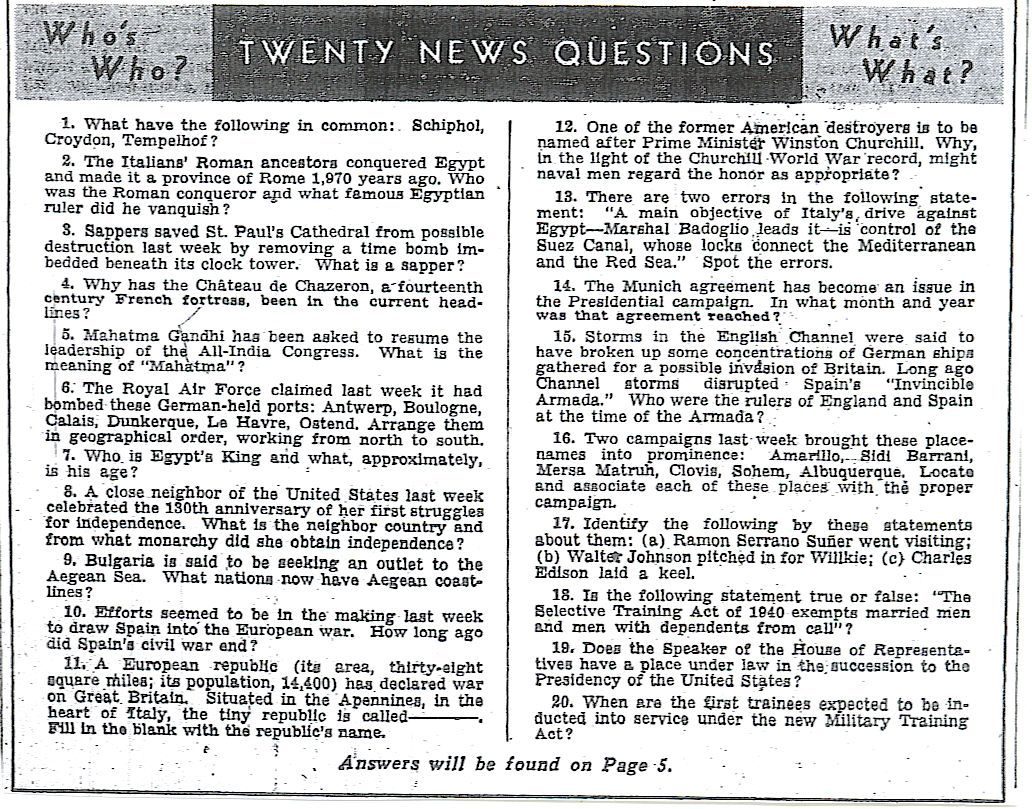





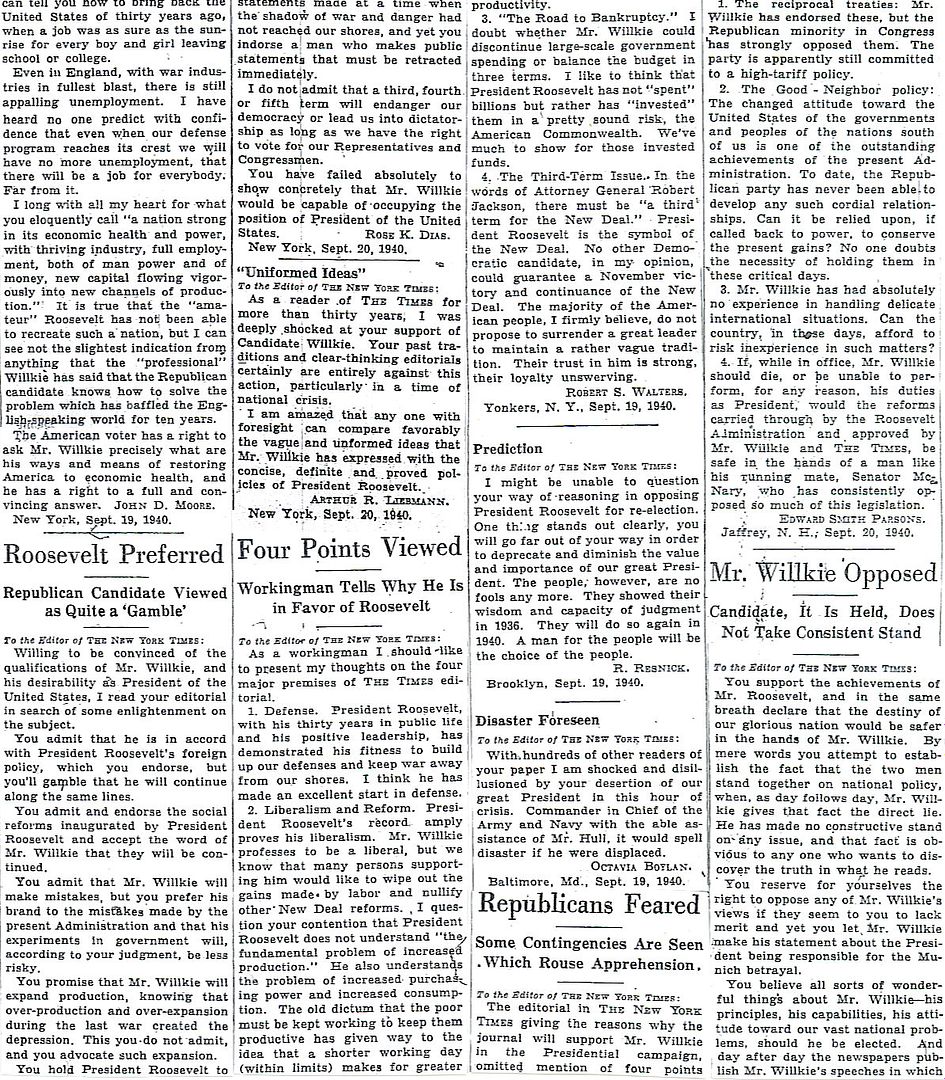
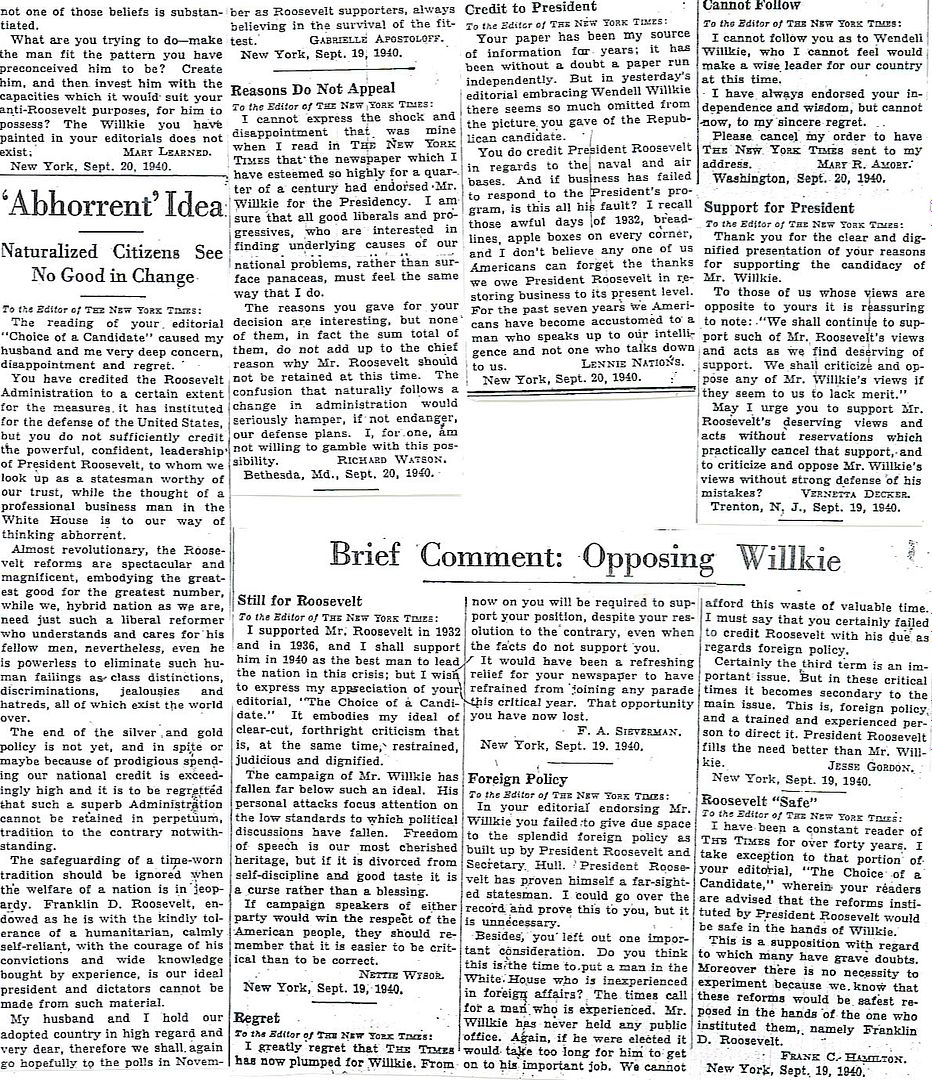
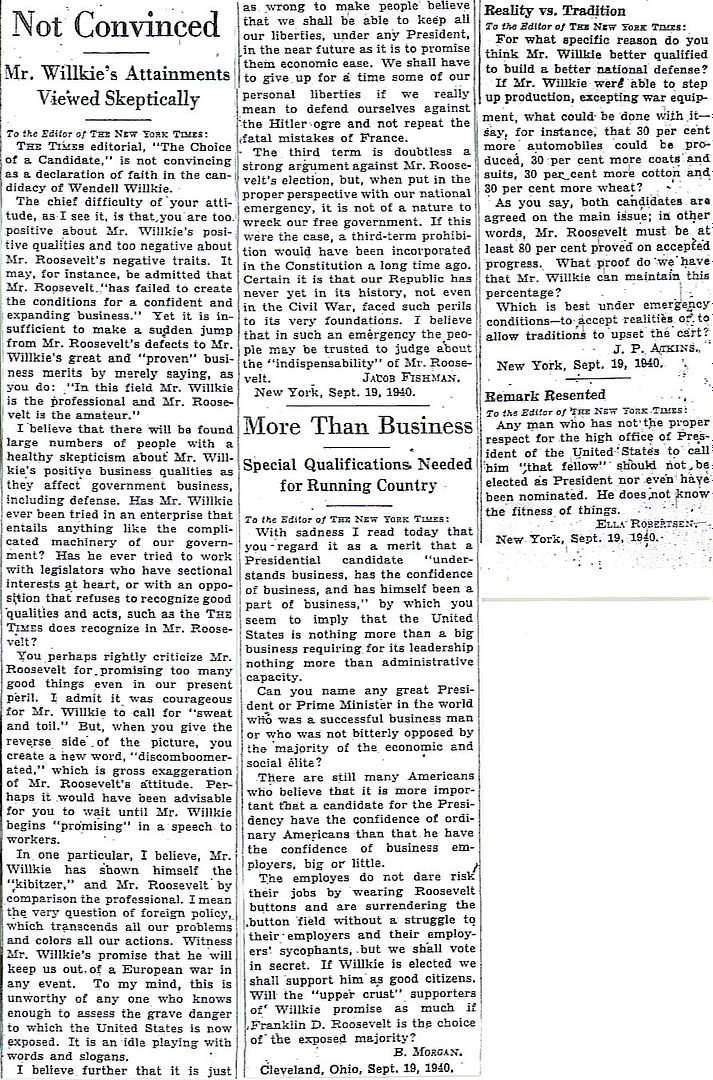

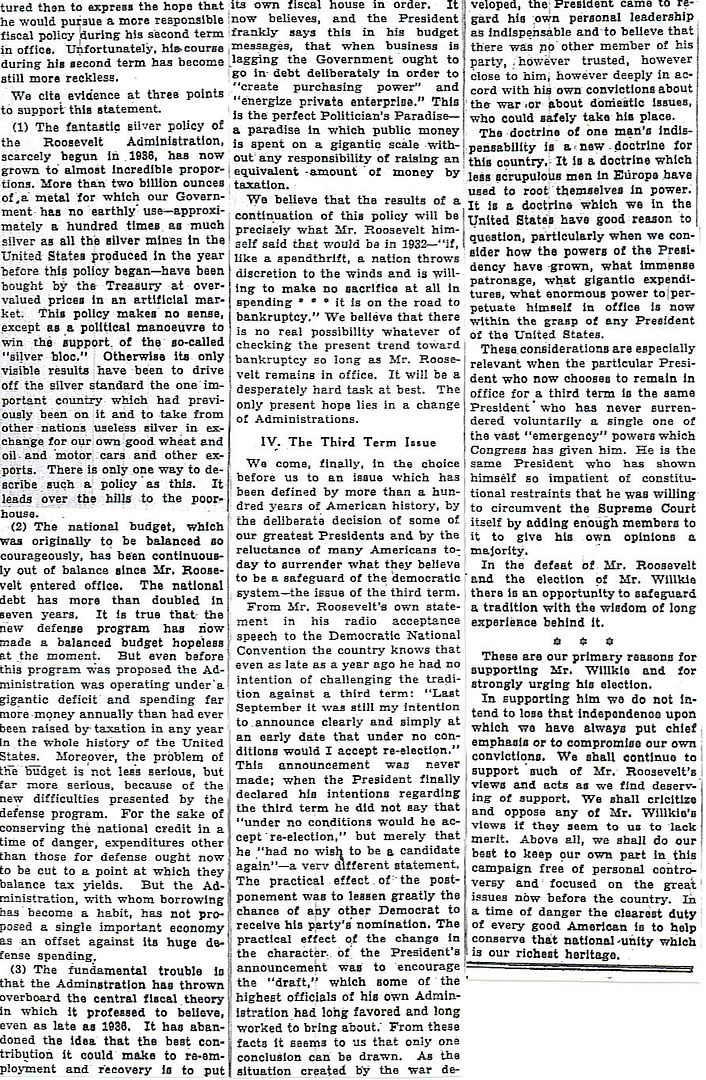
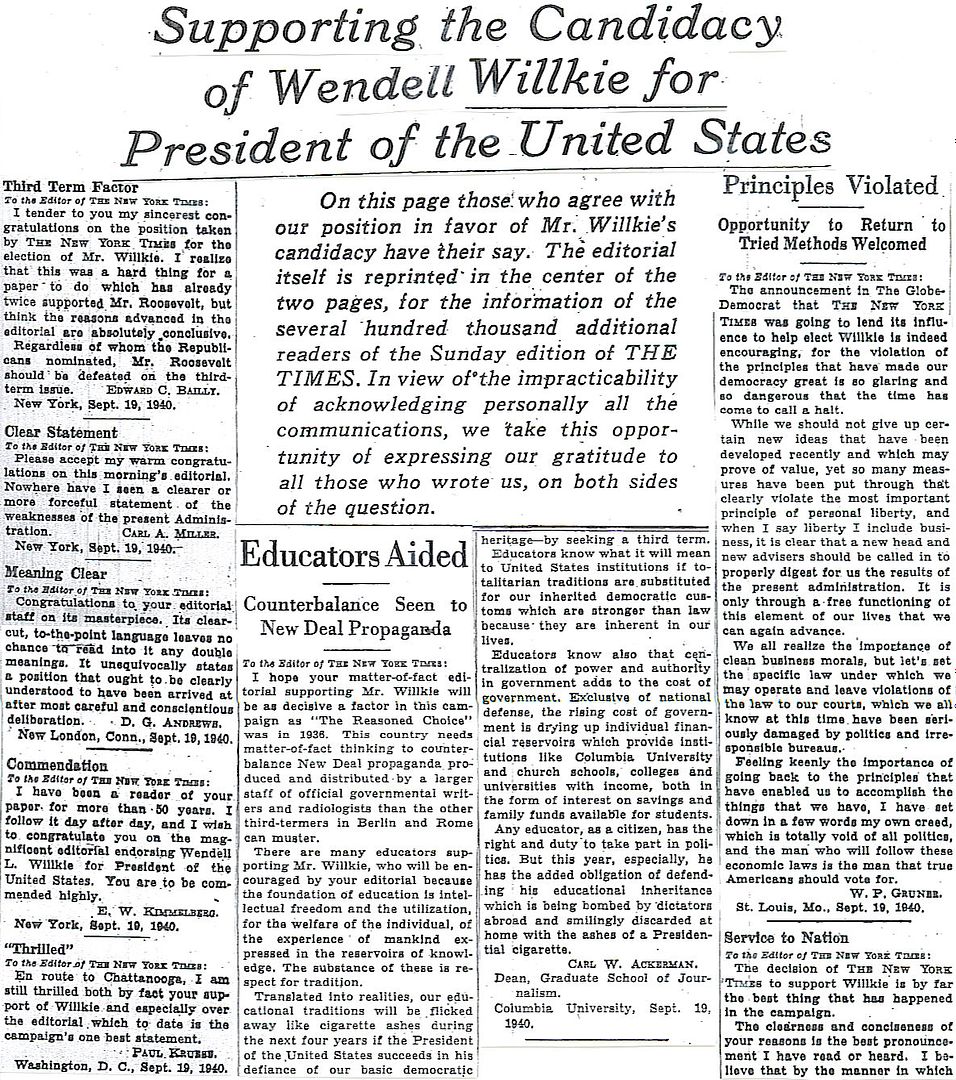
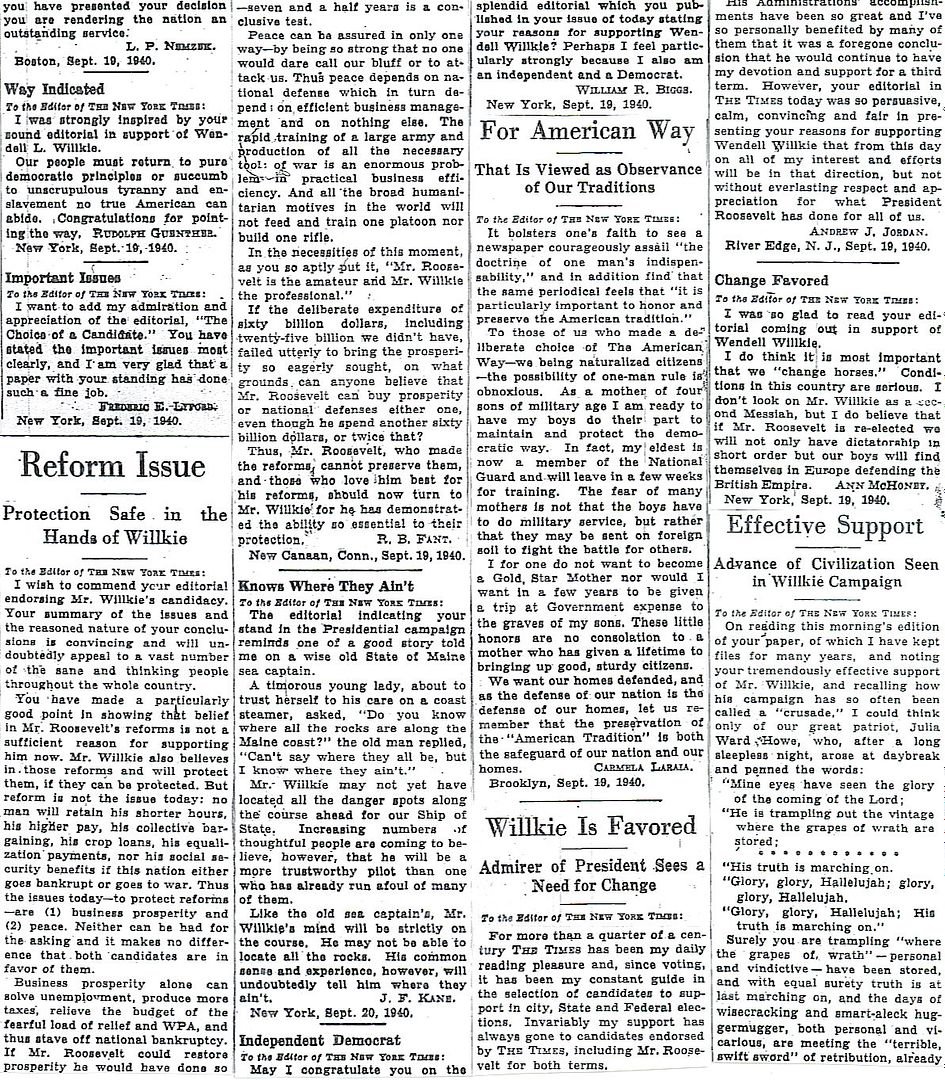
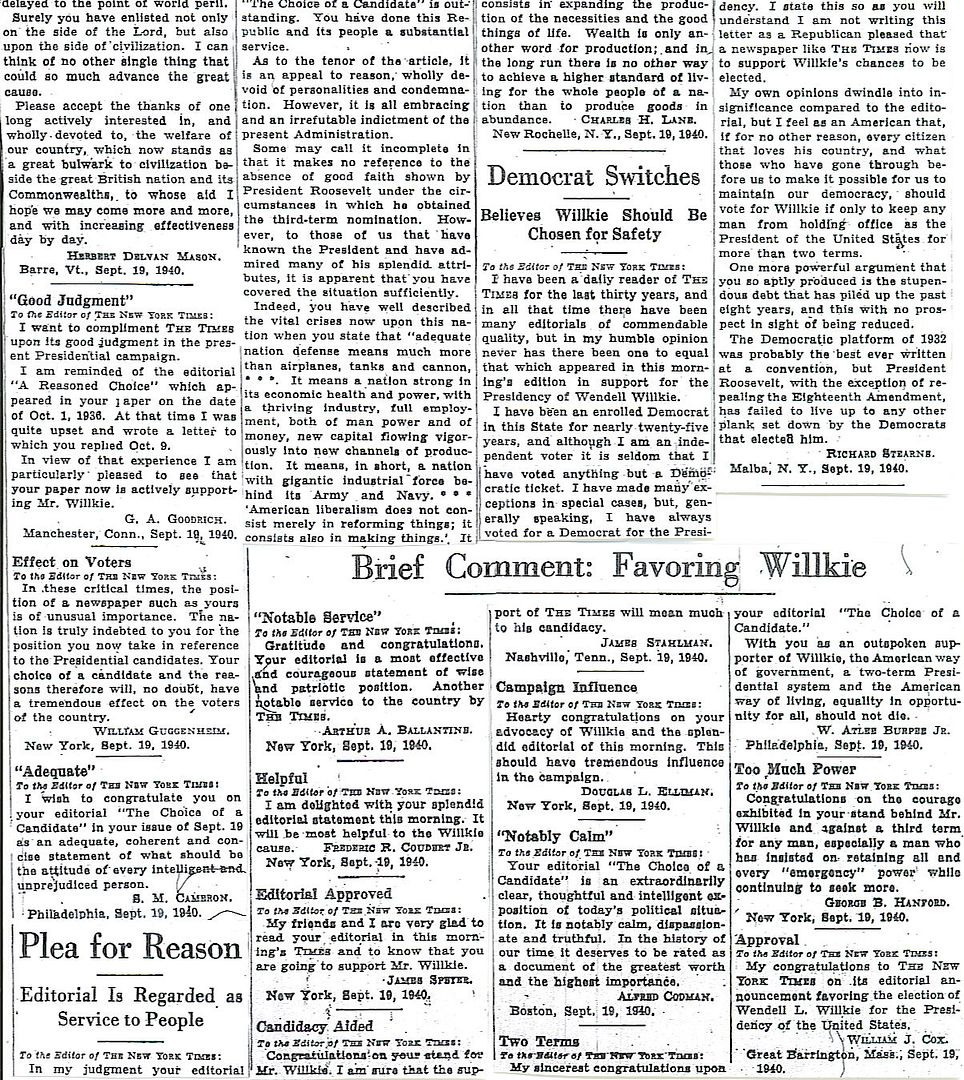

Plus a special guest map from Michael Korda’s, “With Wings Like Eagles,” showing the air defenses of England and Wales, August 1940.
News of the Week in Review
Widening War (war summary) – 11-12
The Nation (domestic summary) – 12-14
Abroad (international summary – 15
Footnotes on Headliners – 16
Twenty News Questions – 17
Willkie’s ‘Lost Chance’ Held Gain for Nation – 18
War Theatre Expands as Britain Holds Fast – 19-20
Answers to Twenty News Questions – 21
Readers’ Commenst, Favorable and Otherwise, on The Times Editorial Stand – 22-25
The Choice of a Candidate (editorial endorsing Willkie) – 26-27
Supporting the Candidacy of Wendell Willkie for President of the United States – 28-31
http://www.onwar.com/chrono/1940/sep40/f22sep40.htm
Japanese troops in French Indochina
Sunday, September 22, 1940 www.onwar.com
In French Indochina... The Japanese enter Indochina after concluding a long period of negotiation with the Vichy government. The Japanese aim is to prevent aid reaching the Chinese through Indochina. There are to be 6000 troops stationed in the country and they are to have transit rights.
In Helsinki... Finland agrees to allow transit rights to German troops en route to north Norway in return for arms supplies.
http://homepage.ntlworld.com/andrew.etherington/month/thismonth/22.htm
September 22nd, 1940
UNITED KINGDOM:
RAF Bomber Command: 4 Group (Whitley). Bombing - aluminium works at Lauta - industrial targets at Berlin.
10 Sqn. Four aircraft to Lauta. All bombed, causing fires.
58 Sqn. Five aircraft to Berlin. One returned early, three bombed primary, one bombed an alternative. two aircraft to Lauta, but failed to bomb due to weather.
77 Sqn. Three aircraft to Lauta. All bombed.
Battle of Britain:
Slight activity in daylight. At night raids on London and Merseyside.
During the night raids a parachute mine exploded at Ilford (London) demolishing a hundred houses, while in Poplar and Lambeth direct hits killed over 50 in shelters. The British Museums King Edward buildings were damaged and Mile End ‘tubestation was closed by a direct hit.
Losses: Luftwaffe, 1; RAF, 0.
GERMANY: Flight testing begins on the unpowered airframe of the Heinkel He 280 V1 twin turbojet fighter. The He 280 was towed aloft by a Heinkel He 111B bomber and cast off for gliding flight.
MEDITERRANEAN SEA:Submarine HMS Osiris on patrol in the southern Adriatic attacks a convoy and sinks torpedo boat ‘Palestro’.
FRENCH INDOCHINA: Japanese troops cross the Chinese border seizing the Vietnamese outposts of Dong Dang and Lang Son from retreating French forces. As a result, The Vichy French government signs an agreement with the Japanese in Hanoi allowing them the use of airfields and also allowing them to base troops in northern part of the country. (Jack McKillop)
Vietnamese communists establish a revolutionary government in the Bac Son border district with the approval of the Japanese but the Japanese withdraw following a diplomatic protest from Vichy and the French quickly resume control. Communist forces in Bac Son effect a retreat to the mountains but their comrades engaged in a similar uprising in Cochinchina’s Plain of Reeds area find themselves without refuge and are wiped out by the French. (Jack McKillop)
http://worldwar2daybyday.blogspot.com/
Day 388 September 22, 1940
Battle of Britain Day 75. Another quiet day, with fog, rain and some sunshine. There are photographic or weather reconnaissance flights all day. 1 Ju88 on reconnaissance is shot down in the English Channel near the Isle of Wight by 234 Squadron. The Ju88 crew escapes from the sinking aircraft and are taken prisoner. RAF loses 3 Hurricanes which get lost in bad weather on a routine patrol and crash land (no pilots killed). London receives exceptionally heavy bombing overnight, with fires lighting up the night sky for several miles.
The attack on convoy HX-72 continues overnight. From 00.22 to 2.14 AM, Joachim Schepke in U-100 continues his spree, torpedoing 4 ships which all eventually sink; British steamer Empire Airman (33 crew killed, 4 rescued), British tanker Frederick S. Fales (10 crew and 1 gunner killed, 32 crew rescued), British steamer Scholar (all 45 hand survived) and Norwegian steamer Simla (the crew jumps overboard, 5 drown, 31 survivors picked up after 45 minutes by corvette HMS Heartsease). In 3 hours, U-100 has sunk a remarkable 7 ships (over 50,000 tons). At 7.40 AM, U-32 shells British steamer Collegian (a straggler from HX-72) with the deck gun from 7km but Collegian returns accurate fire and chases off the U-boat.
At 5.55 PM, 100 miles South of Faroe Islands, U-31 sinks the tiny Faroese sailing trawler Union Jack with the deck gun. The crew of 7 abandons ship in a small rowboat and reach the tiny Flannan Isles in the Outer Hebrides 36 hours later.
British submarine HMS Tuna sinks Norwegian liner Tirranna 1 mile from shore near Bordeaux, France. Sadly, Tirranna had been taken as a prize ship by German armed merchant cruiser Atlantis on June 10 and dispatched to occupied France on August 5 with 274 prisoners. 87 prisoners, including women and children, and 1 of the prize crew from Atlantis are killed. http://www.warsailors.com/raidervictims/atlantis.html
At 3 AM, 11 Swordfish and 6 Skuas fly 50 miles from British aircraft carrier HMS Furious to bomb Trondheim. However, bad weather frustrates the operation, forcing HMS Furious to return to Scotland early and abandon some of the aircraft. 1 Swordfish crashes into the sea looking for the carrier (3 aircrew killed). 3 Swordfish crash land in Norway (9 aircrew captured). 1 Swordfish & 1 Skua crash land in Sweden (5 aircrew interned). http://www.bbc.co.uk/ww2peopleswar/stories/81/a2109881.shtml
British destroyers HMS Jervis, Janus, Juno and Mohawk bombard the Italian-held airfield at Sidi Barrani, Egypt, and then return to British-held Alexandria. British submarines attack Italian ships off Italy. HMS Truant sinks steamer Provvidenza 10 miles West of Naples. HMS Osiris sinks Regia Marina destroyer Palestro in the Adriatic Sea 75 miles east of Bari.
Wow! I didn’t know the NY Times had endorsed Willkie. How things change.
I was startled by the Times’ support of Willkie.
One can scarcely imagine such an endorsement now, without immediately thinking satire or mockery.
How the mighty have fallen.
Date: 22nd September 1940

Enemy action by day
Several enemy reconnaissances were plotted along the coasts from Portsmouth round to Harwich, but activity was on a comparatively small scale with no mass raids or important engagements.
East
A reconnaissance was flown over a convoy off Lowestoft at 0700 hours. At 1545 hours two enemy aircraft crossed the coast at Harwich and flew to Debden and Duxford and were engaged by Fighters. At 1720 hours a further raid by one aircraft touched the coast near Harwich.
South East
Between 0700 and 1100 hours and again between 1300 and 1500 hours enemy aircraft flew several reconnaissances and patrols in the Straits of Dover and over a convoy in the area. Between 1500 and 1700 hours six or seven enemy aircraft operating singly, flew from Dieppe over Biggin Hill, Northolt, Central and West London and back to France over Sussex.
One aircraft crossed the coast near Bognor flew to Northamptonshire.
At 1900 hours three raids crossed the coast at Rye en route for London and after 1930 hours a steady stream of raids was plotted from between Beachy Head and Dungeness, also from the Dutch Islands over East Anglia to London and from Cherbourg over Selsey Bill to London.
South and West
At 0700 hours a hostile reconnaissance was flown from Calais to West of Shoreham. At 0800 hours one enemy aircraft crossed the coast near Lyme Bay, flew to Gloucester, Liverpool and Burnley and then turned South again flying over Wolverhampton and South Wales and out over Lyme Bay to the Channel Islands. Fighters unsuccessfully attempted to intercept.
Between 1130 and 1330 hours several raids from Cherbourg and Baie De La Seine approached the Isle of Wight, but turned back before reaching the coast.
A Ju88 was destroyed by Spitfires near the Lizard at about 1700 hours.
North West
At 0750 hours it was reported that a convoy was being attacked off North West Ireland. Fighters attempted interception without success.
By night
The usual night activity started at an early hour, the first raids having been plotted arriving during the hours of daylight.
By 2030 hours there was very considerable activity concentrated almost exclusively on the London area. Enemy aircraft entered from the South, South-East and East Coasts the raids originating from many points ranging from Cherbourg to the Dutch Islands. By 2135 hours single raiders had appeared in the Bristol area and over Wiltshire, Hampshire and Norfolk but otherwise all raids seemed to make London their objective. By 0200 hours most raids had left, and London which had received the 'Red' warning at 1904 hours, went 'White' at 0230 hours. Two raids were still operating in the area of the Humber, and one in South Wales, which at 0300 hours flew on to the Liverpool area.
Activity recommenced over London and East Anglia at 0330 hours.

________________________________________
Statistics
Fighter Command Serviceable Aircraft as at 0900 hours, 22nd September 1940
Casualties:
| Enemy Losses | ||
| By Fighters | ||
| Destroyed | Probable | Damaged |
| 1 Ju88 | ||
| 1 Do215 | ||
| 1 | Nil | 1 |
Patrols:
Balloons:
Attacks on Aerodromes:
Organisation:
Home Security Reports
Damn, Homer! Bury us with the homework, will you? It will take me some time to digest this meaty fare.
One quick note: I saw the short article on the RAF pilot marrying his American bride “by proxy.” Of course it brings up the question of consummation of the marriage and whether similar arrangements have been made.
What - you think this is easy for me? I work my fingers to the bone - you should see my scissors blisters and scotch tape rash - hour after hour - just so my people can get a decent education. And this is the thanks I get? Too much homework?
Sheesh. But some day, after I'm gone, you'll thank me. When you get that higher paying job.
I saw the short article on the RAF pilot marrying his American bride “by proxy.” Of course it brings up the question of consummation of the marriage and whether similar arrangements have been made.
The times I have been Best Man my most difficult task has been to propose a toast at the reception. I suppose if called upon to perform a more extraordinary service . . .
GodBlessRonaldReagan: "Wow! I didn’t know the NY Times had endorsed Willkie. How things change."
headsonpikes: "I was startled by the Times’ support of Willkie.
One can scarcely imagine such an endorsement now, without immediately thinking satire or mockery."
I knew the NY Times had endorsed Wilkie in 1940, and perhaps not so surprisingly.
After all, both were New Yorkers, both internationalists, and Wilkie sounded a bit more financially responsible.
And in those days that would have been a matter of some concern to Times' readers.
But does anyone know if Wilkie was the last Republican endorsed by the Times?
Did they, for examples endorse New York Governor Dewey in 1944 or 1948, or Eisenhower in 1952 and 1956?
Just curious -- who was the last Republican for President endorsed by the New York Times?
I’ve actually had to work today so I’m just getting around to reading this and about fell out of my chair when I read this post. Of course I would have to see a picture of the bride before I could make a determination of whether a stand-in for the R.A.F. pilot would be forthcoming.
The New York Times endorsed Roosevelt in 1944, but then backed Dewey in 1948 and then Ike in both 1952 and 1956.
After that it is a straight backing of the Democrat candidate right up to this last election.
The Times actually has this on their web site with all their endorsements dating back to Abraham Lincoln here.
Is that a drawing of Obama in 16? I see a family likeness.
Disclaimer: Opinions posted on Free Republic are those of the individual posters and do not necessarily represent the opinion of Free Republic or its management. All materials posted herein are protected by copyright law and the exemption for fair use of copyrighted works.